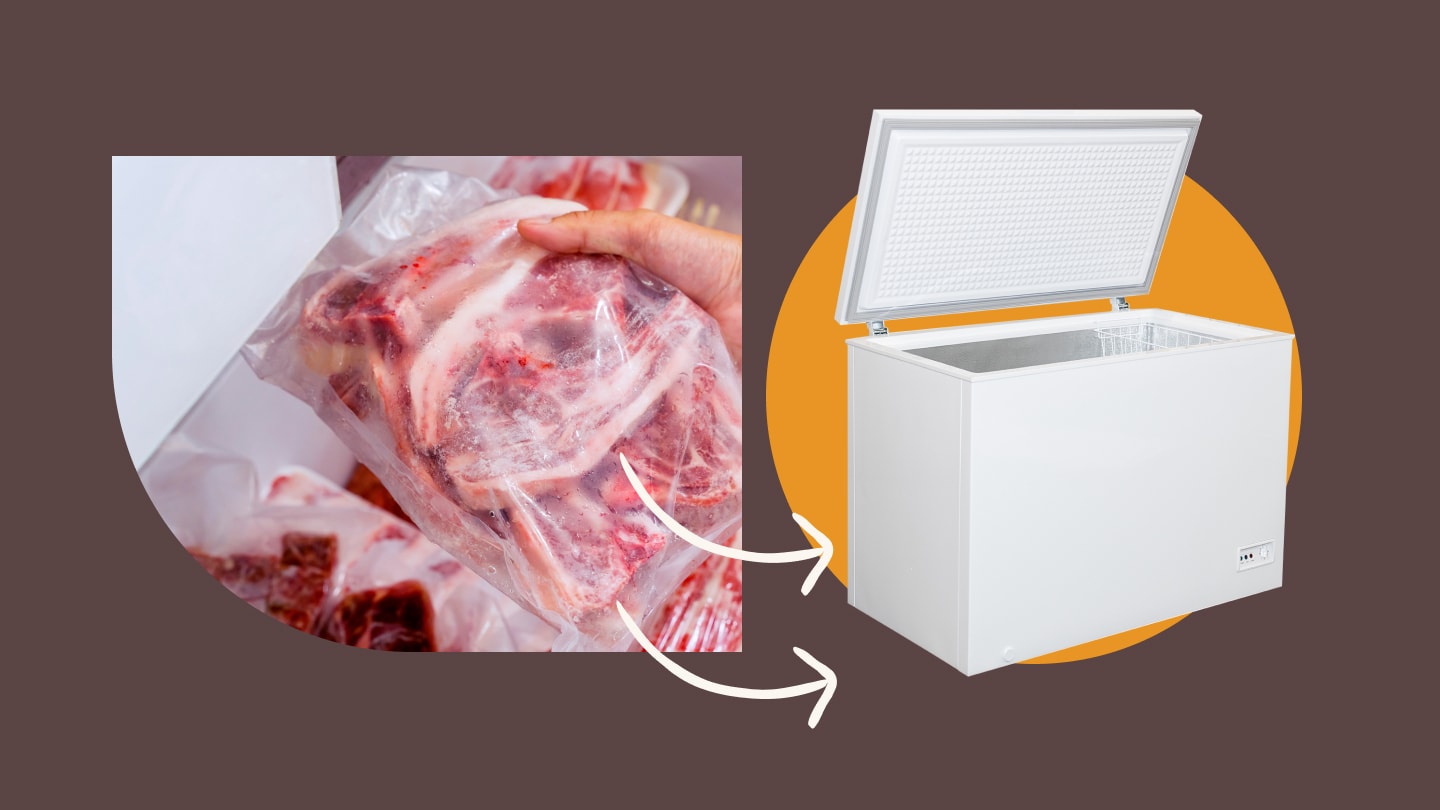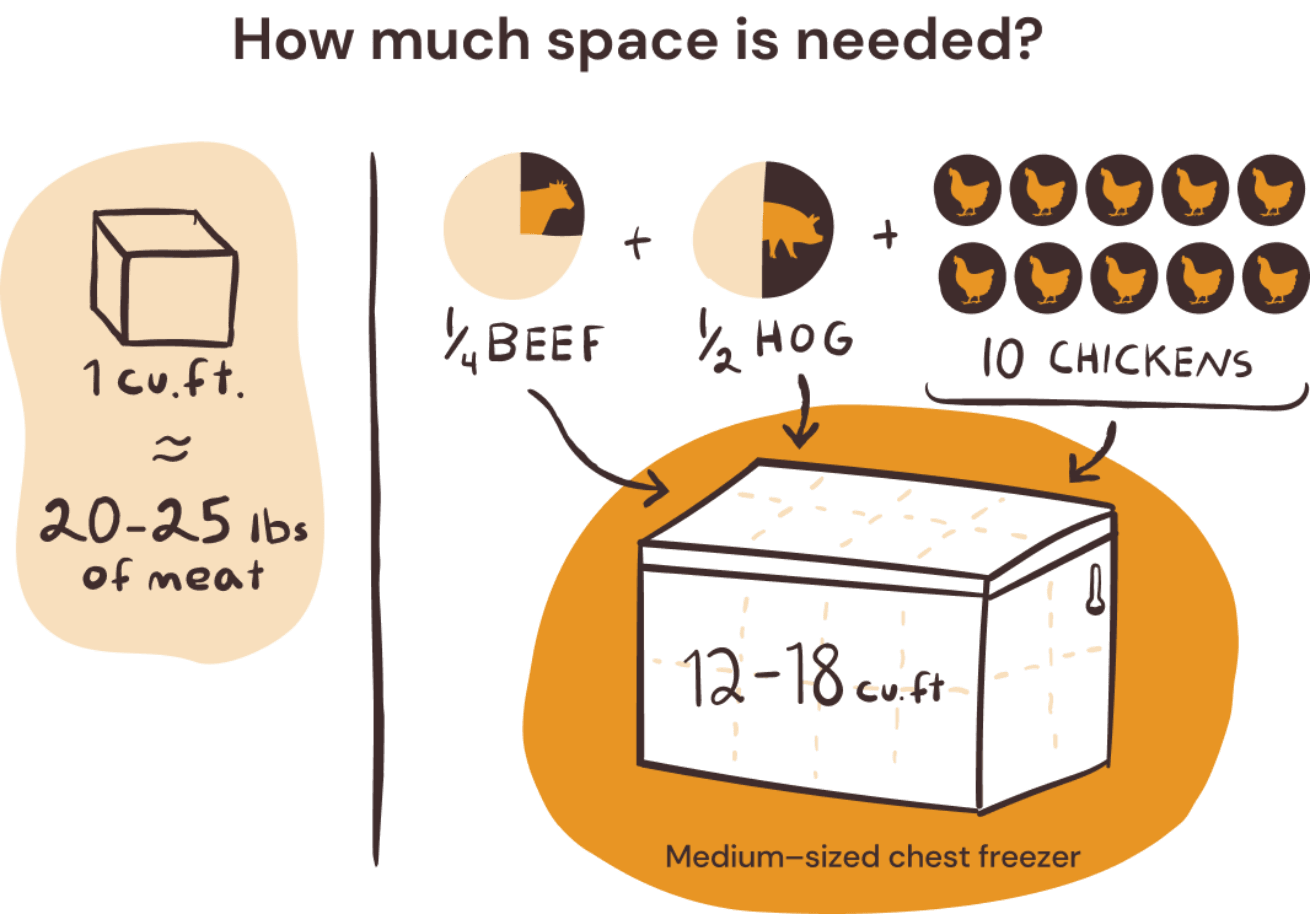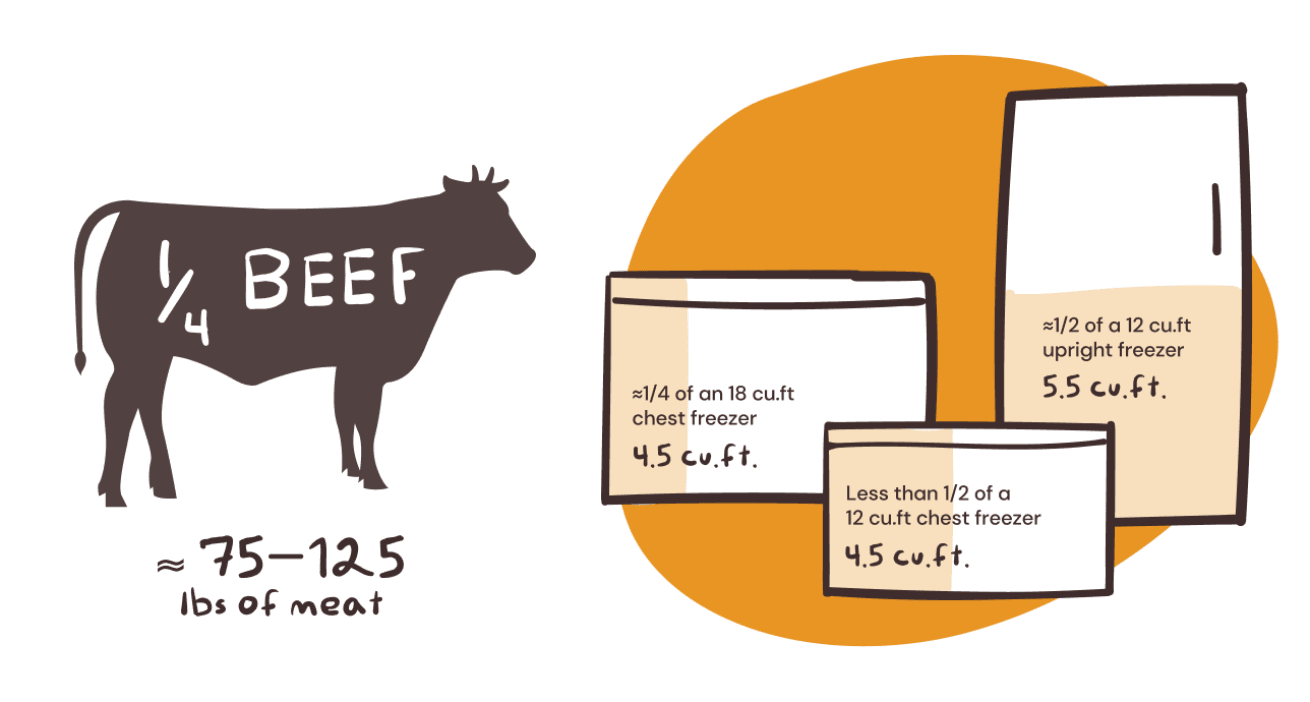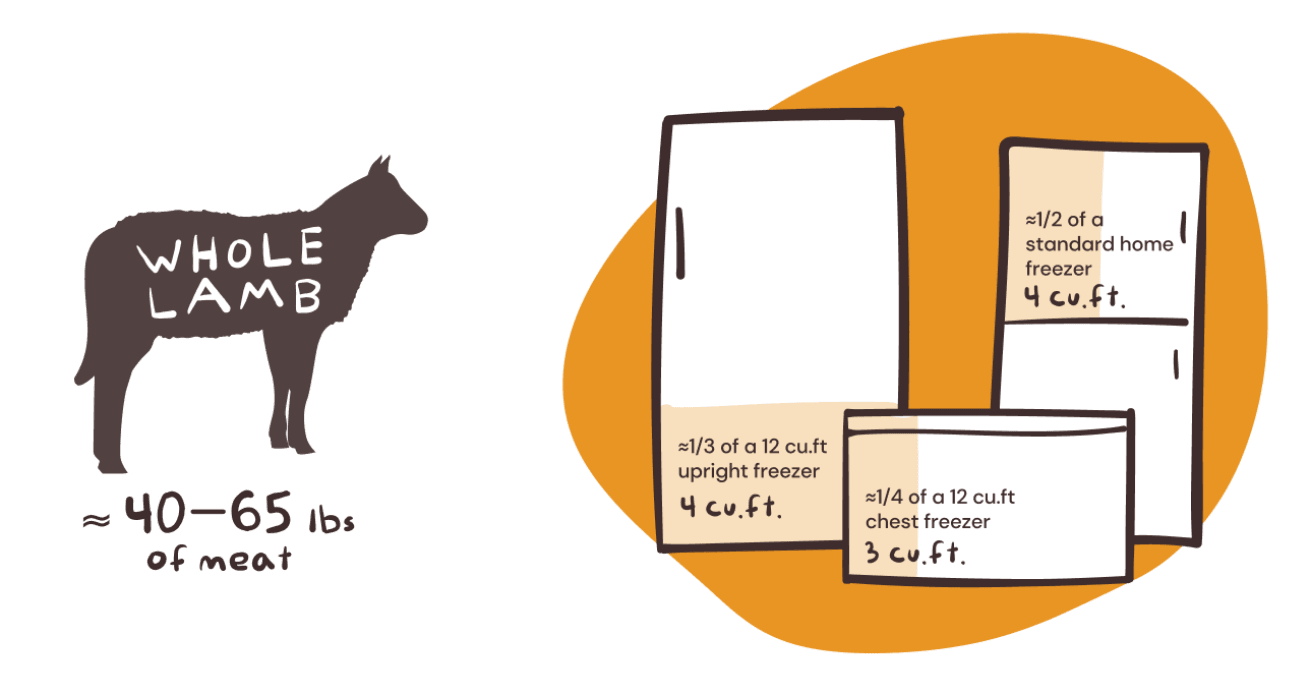Good Meat BreakdownBulk BuyingPrepare to Buy in Bulk
Freezer Space

Let's build a Good Meat® movement today.
Donate today!If you’re buying bulk, via the animal share or CSA route, you’ll likely need some freezer space. And part of deciding how much meat to buy depends on how much freezer space you currently possess, or how much more you need. A separate freezer might seem like a big, expensive step, but it allows you to buy meat more affordably in the long run because you’ll have the space to store a lot of it. Freezers come in four basic sizes: compact (5 cubic feet), small (6 to 9 cubic feet), medium (12 to 18 cubic feet), and large (18 to 25 cubic feet).

According to the calculations, one very impeccably organized cubic foot of freezer space would hold approximately 30 pounds of meat. But meat doesn’t all come in standardized shapes. 20 to 25 pounds is more likely, depending on how adept you are at organizing frozen roasts and unwieldy packages of bones. An upright freezer will hold slightly less than a chest freezer, but is still an efficient way to store your meat, if space is at a premium in your home.
If you’re buying a quarter beef (around 75–100 pounds take-home packaged meat), a half hog (around 45–65 pounds of take-home packaged meat), and ten chickens, you would likely be in the market for a medium (12–18 cubic feet) freezer.
Here’s a breakdown of about how much freezer space is needed for a share of beef, pork, and lamb:



The freezer investment
Most modern freezers are energy efficient, and they will tell you on the “EnergyStar” rating sheet how much it will cost to operate on an annual basis. Freezers in the 16 cubic ft range cost $50–75 per year to run. After the initial investment, which can be anywhere from $150–$500, the cost savings in time and trips to the store is undeniable. Freezers are most efficient when they are 2/3 full.
What if a chest freezer just isn’t possible?
If acquiring a chest freezer is not feasible for you, you might fill your standard kitchen freezer (which, completely empty, is about 7 to 10 cubic feet) with as much as an eighth to a quarter beef, a half hog, or a whole lamb/goat. Just don’t plan on freezing any corn or spinach along with that meat. If freezer space is truly at a bare minimum in your household, depending on your state’s interpretation of certain meat share regulations, plenty of farms are willing to sell smaller shares (typically the more affordable option) or individual cuts (the more expensive option). You might also consider teaming up with other friends or family to split the smallest share you can find. One of our main Good Meat tenants is community. Good Meat in three freezers is always better than Good Meat in one, if you ask us.
Does freezing meat damage it? And how long can I store meat in the freezer?
Freezing is, hooves down, the best way to store meat for long periods. The quicker it is frozen, the better the quality is preserved. For this reason, having the butcher freeze your bulk meat is the ideal option, as their walk-in freezers operate as blast chillers with lots of air movement and very low temperatures, two factors that make ideal conditions for preserving quality meat. As meat freezes and ice crystals form in the muscle tissue, there is minor impact to the meat. But the physical impact of freezing meat on overall quality should not be a concern when purchasing in bulk. More often than not, you won’t notice the impact if you consume the meat within a recommended period of time.
Meat can be stored frozen forever, literally, and still be safe, but palatability starts to degrade after a period of time. The general rule is, the darker the meat the longer it maintains texture and flavor in a frozen state. Thus, beef and lamb can be stored longer than pork (or poultry). This rule of thumb also has to do with how quickly the fats from these animals degrade while frozen. Check out our “Ideal frozen storage times” (below), but keep in mind that those items hiding in the bottom of your freezer are still safe to eat no matter when you discover them.
Ideal frozen storage times
- For beef and lamb, 9 to 12 months
- For pork and goat, 6 to 9 months
- For ground meats, sausages, and cured items (e.g. bacon, ham, etc.), under 6 months
- For stew and kabobs, under 6 months
Keep in mind:
- Boneless cuts store better than bone-in cuts.
- The larger the cut, such as large roasts vs. small steaks, the longer and better it will store (and longer it takes to thaw, but more on that in our Cook It section.
What to Read Next
Popular Links

Transparency in meat, from pasture to plate.
Practical tools and a national directory to help you choose—and champion—ethical and responsible meat.